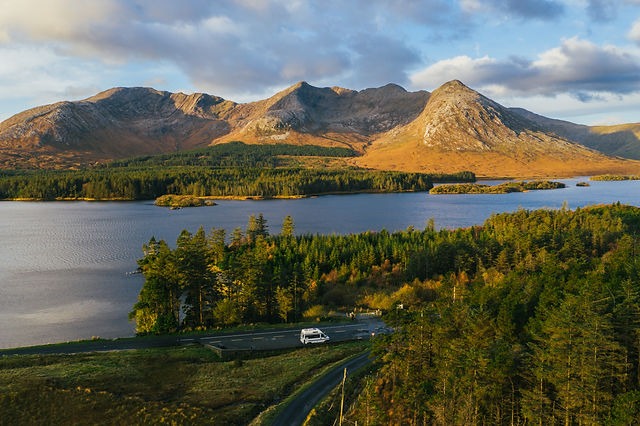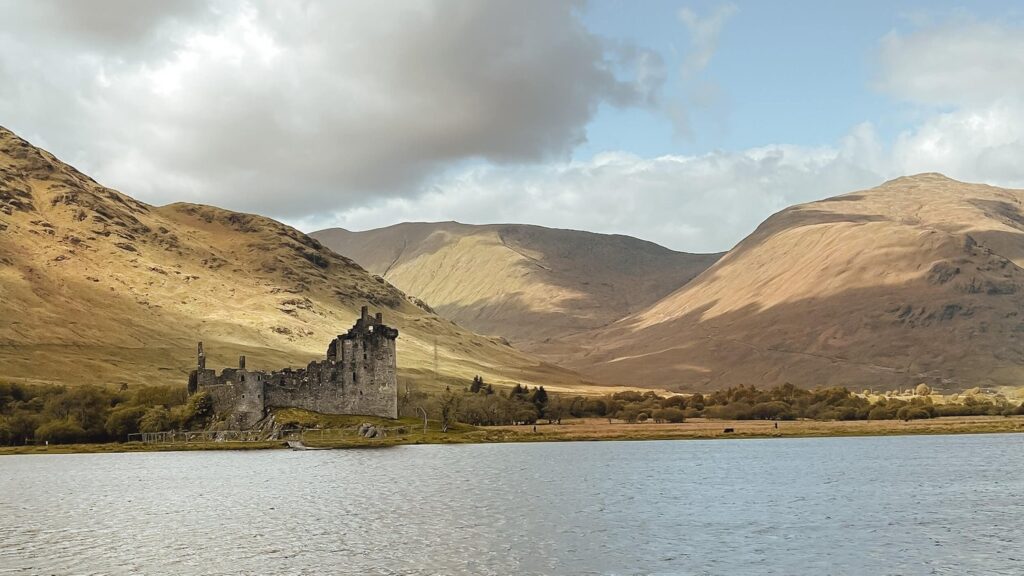
Shortly post a challenging breakup, this voyager confronted apprehensions of being alone – yet, the mountains, oceans, and local pubs aided in her liberation.
Voices outside the van woke me in the night. I lay still, my mind racing. There had been no one around when I parked at the end of a single track next to a wild beach. Campervanning alone as a woman was going to bring challenges, I knew, and sleeping in remote spots was high on the list of them.
Eventually an engine started, they drove off and there was silence. The next morning’s reward was a sunrise of shifting colours over a deserted beach in County Donegal – another new day all to myself to explore.
As far as adventures go, this trip – 10 days travelling alone around the island of Ireland, climbing as many mountains as I could – was one of my least far-flung. I’d travelled on the Trans Siberian Railway, hiked 500 miles across Spain, walked the Great Wall of China and the Inca Trail. But I’ve learned that you can cram a lot of adventure into a short amount of time, without travelling to far-flung places.
I had booked the trip following a painful break-up just two weeks before, deciding it was best not to remain at home nursing heartache.
After picking up the van in Belfast, I hit the road with the outline of a plan – a few ideas on mountains I liked the sound of, but not much else. In the end I completed more than 800 miles, climbed 12 mountains with a total ascent of 5,900 metres – that’s higher than Everest base camp.
My initial destination was Glenveagh National Park in Donegal, where I conquered the 751-meter-high Errigal. Although it’s a popular trail, I hadn’t previously ventured alone on hikes in Ireland. The vistas were breathtaking, and the thrill of adventure was palpable. I learned that Irish mountain paths are either widely recognized or entirely secluded. Drumnalifferny (595m) posed a particular challenge – isolated, with only herds of red deer for company. I trekked through marshy terrain and rocky areas, concerned about daylight fading and the absence of GPS. Yet, upon returning to the van after an adrenaline-pumping day in that scarcely explored terrain, the sense of accomplishment was electrifying.
Days passed, marked by adventurous swims and camping in remote spots (with Park4Night guiding my parking choices to ensure I was welcome). Night after night, I gained assurance sleeping solo in the van, finding solace akin to a cocoon, often lulled to sleep by the ocean’s rhythmic melody. Renting a bike, participating in a parkrun on Achill Island, and relishing a folk band’s performance at a Westport pub—my longing for a pint surpassed any apprehension about being alone in that setting.
The band had a rotating lineup, yet the locals’ warmth, banter, and laughter made for an uplifting and enjoyable evening, a refreshing change after solitary nights.
Exploring the Wild Atlantic Way was a delight. Scaling the 764-meter-high Croagh Patrick (referred to as the Reek) in County Mayo, a revered pilgrimage site crowned with a chapel and offering a panoramic view of Clew Bay’s myriad islands, was gratifying. Gazing out, I found contentment in tracing the path I had journeyed.

Amidst the Mourne Mountains in County Down, the weather worsened: I confronted the 850-meter-tall Slieve Donard amid strong winds and adverse conditions. Navigating through low clouds was challenging, yet pushing my boundaries felt empowering.
Originally, my trip plan was vastly different, meant to be shared with my ex. I harbored numerous concerns about going solo: fear of losing my way, spending excessive time alone, or encountering injury in a remote area. Yet, adventure thrives on risk, and embracing it requires facing some fear. Indeed, embracing fear and proceeding regardless is a fundamental aspect of the journey.



